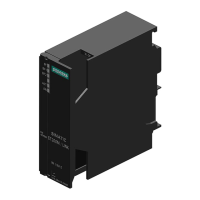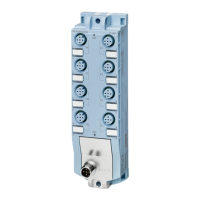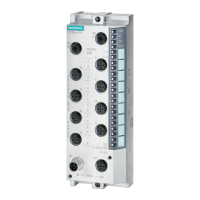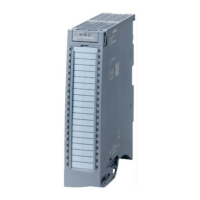1STEP 5V/204kHz
2.5 Fundamentals of Positioning
ET 200S Positioning
26 Operating Instructions, 05/2007, A5E00124871-04
2.5.3 Traversal Curve of the 1STEP 5V/204kHz
Introduction
Each movement of the stepping motor is executed by the 1STEP 5V/204kHz in accordance
with the following traversal curve. The 1STEP 5V/204kHz forms the fundamental parameters
(start-stop frequency, output frequency, and acceleration/delay) of the traversal curve with a
base frequency that you select.
W
I
)
D
)
VV
)
)
VV
VWDUWVWRSIUHTXHQF\
)
D
RXWSXWIUHTXHQF\
)
PD[
PD[LPXPIUHTXHQF\RIWKHVWHSSLQJPRWRU
VWDFFHOHUDWLRQ
UDQJH
QGUDQJHRIFRQVWDQW
IUHTXHQF\YHORFLW\
UGGHOD\
UDQJH
PD[
Figure 2-3 Traversal Curve of the 1STEP 5V/204kHz
Start-Stop Frequency F
ss
The start-stop frequency F
ss
is the frequency to which the motor can be accelerated under
load from a standstill. If the selected start-stop frequency F
ss
is too high, the motor may stop.
The size of F
ss
depends on the load inertia. The best way to work out the load inertia is by
trial and error.
The start-stop frequency F
ss
is simultaneously the minimum output frequency F
a
needed to
move the stepping motor.
Setting the Start-Stop Frequency F
ss
Through parameter assignment, the 1STEP 5V/204kHz permits the start-stop frequency F
ss
to be set in steps. To do this, select the multiplier n between 1 and 255, which is multiplied
with the base frequency F
b
. You can lower the start-stop frequency F
ss
again with the
reduction factor R (1 or 0.1) in the positioning job.
F
ss
= F
b *
n
*
R min. F
ss
max. F
ss
Reduction factor R=1 4 Hz 204 kHz
Reduction factor R=0.1 0.4 Hz 20.4 kHz

